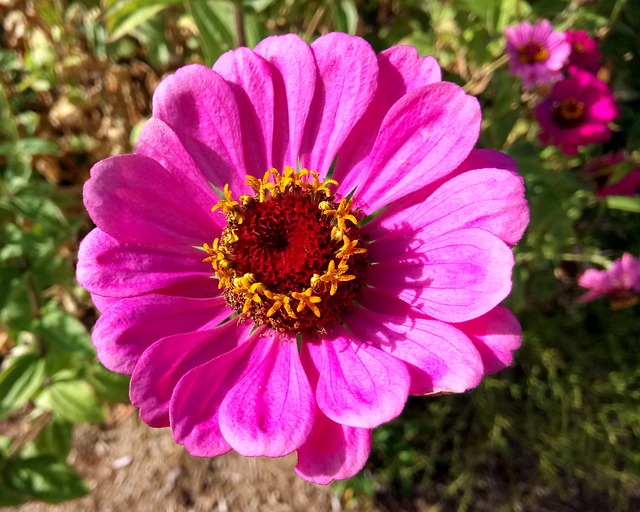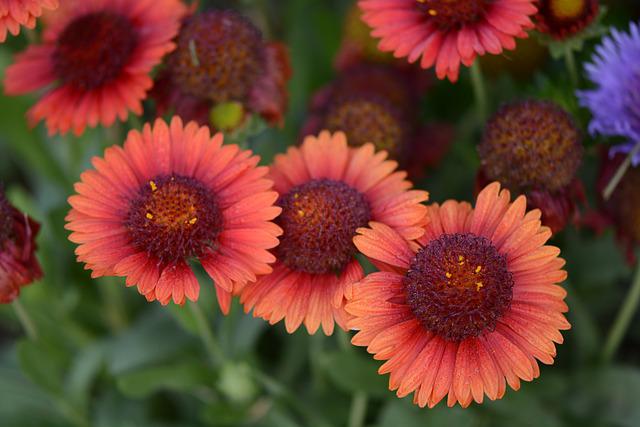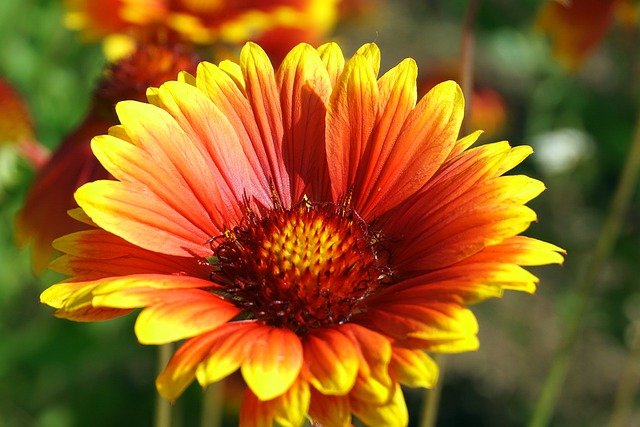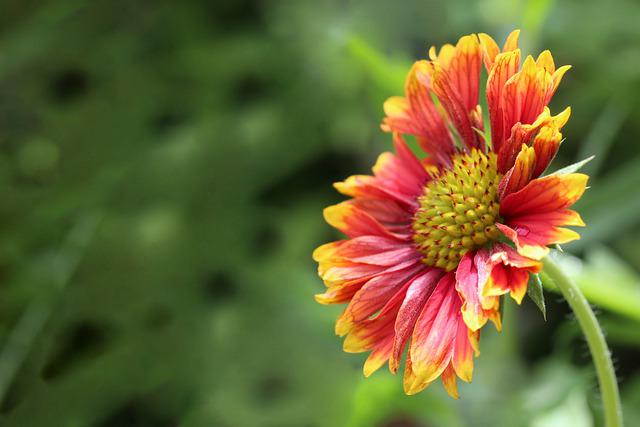When it comes to bringing beautiful flowers to your home, no one can beat the aura of a blanket flower which brings a colorful and interesting addition to your home or flower bed.
Belonging to the family Daisy, and sunflower, blanket flowers are similar to those of wildflowers.
If you want your blanket flower plant to offer you long-lasting blooms, it is necessary to take the proper care of them. Learning the caring and growing guide of this plant is a fairly simple process.
They can be simply started from seedlings and produce blooms of red and yellow flowers to enhance your garden’s beauty.
So let’s dive into the article below to know how to grow and care for a blanket flower plant.
Plant overview
The blanket flower otherwise named the gaillardia is a common wildflower that grows across the desert plains of the midwestern United States. Being native to South America and North America of hardiness zone 3-10, this genus belongs to the family of Asteraceae, with the same family as Daisy, sunflower, etc.
These flowering plants are short-lived perennial plants that grow in the shades of deep burgundy, deep peach, apricot, fiery red or orange, and golden-yellow.
The large blooms of these flowers bloom clustering on the top of the high stems of the plant in bright colors.
Blanket flower varieties to grow
Featuring nuanced color patterns and beautiful shades of yellow, red, and orange, the blanket flowers are popular cottage flowers and the best option for every gardener.
Some of the popular varieties of these flowers are given below. Let’s have a look at that.
Common blanket flowers
Common blanket flowers are one of the popular varieties that are widespread in North America. This variety bears one-inch-long yellow petals along with fuzzy green foliage.
Sundance
Also named the firewheel or scientifically named as the Gaillardia pulchella, this variety of blanket flowers possesses vividly colored petals that start with deep red near the center and end with vibrant yellows at the tips of the frilled petals. The symmetry of the petals of this plant reminds me of a pinwheel.
Gaillardia Arizona sun
Gaillardia Arizona sun is a cultivar of blanket flowers that features intensely red petals that are tipped in s golden hue. This is a perennial plant that attracts birds and vegetables.
Gaillardia X grandiflora
Gaillardia X Grandiflora is a hybrid species of blanket flowers that make its presence from the cross between G. aristata and G. Pulchella. This variety blooms like a daisy plant with red blooms and golden yellow fringes.
This flower also has a short-lived bloom time like other herbaceous perennials that start in the summer. A yellow cultivar of this flower also exists named the Mesa yellow.
Gaillardia fanfare
This popular variety of blanket flowers has a striking appearance with small trumpet-like petals that transit from red-orange at the center to yellow at the tips.

How to care for blanket flowers?
Blanket flowers generally originate as wildflowers and they don’t require a lot of care. They can thrive well in all climates without any care. However, we are giving you certain tips to consider if you want to help your plant to thrive well.
Sunlight
Being a tropical plant, blanket flowers thrive well in desert climates that have poor soil and high temperature. So these plants requires a location with full sun.
So consider planting your blanket flower in a sunny place away from the shady place otherwise the partial shade can stunt the blooms and lowers their growth.
Temperature
Being blanket flowers thrive well in full sun, they can withstand hot summer temperatures. They prefer hot and dry climates over cool and moist ones and require a humid environment.
If you are planting your plant in a cooler region, protect it from overwintering with the application of a thick layer of mulch.
Soil
As we discussed earlier, being native to the tropical region the blanket flowers grow well in dry, well-draining soil or sand. Too much moisture in the soil can cause serious growth and health problems of the plant.
As the plant grows well in poor soil, they don’t need to be amended with rich matter and fertilizer. Besides, it also doesn’t require well-draining soil. They are particularly concerned about the soil pH.
The plant requires the soil to be in moist condition. Heavy clay in the soil can probably kill your plant.
Water
Blanket flowers require immediate watering after plantation. This watering encourages good root development.
This plant requires the right amount of watering. It requires the soil to be moist, and not too soggy. So check your soil frequently to ensure the watering level and avoid overwatering.
Once the plant becomes established, it doesn’t require watering.l being they are drought tolerant. Unless the weather is extremely hot and dry, don’t water your plants. In hot weather, water your plant once or twice per week.
Fertilizer
As blanket flowers prefer poor soil, they encourage more flowering in poor soil than in rich soil. So it is recommended not to apply fertilizer in a blanket flower plant.

How to propagate a blanket flower?
Blanket flowers can be propagated through seeds that you need to sow in spring. But they will not flower in the first year. So consider sowing your seed in late summer and protecting the baby plants in winter.
Besides sled seeding, you also can grow this plant by dividing it every two to three years during spring and fall.
Following are the steps to propagate the blanket flowers by dividing
- Dig a circle up to 6 to 8 inches around the mound of the blanket flowers that need dividing by using a spade.
- Dig down up to afoot to release the root balls.
- Gently, lift the root ball of the plant from the soil with the help of the spade. Shake it slightly to remove the dirt on the root balls and expose the roots.
- Tease the roots apart into two or three clumps with your fingers or by using a sharp and sterile knife. Each clump must include a few shots of foliage.
- Replant the division in a prepared area which will let the root spread.
- Cover the roots with soil. Once it gets covered, water it thoroughly and moisten the roots.
- Keep the soil moist by watering, until the plant seems no longer stressed.
Common Pests and diseases
As we discussed earlier, blanket flowers attract bees and birds, it has positive and adverse effects as wet. Although these animals help in pollination and help in the propagation of new plants, they can cause many diseases.
A virus can cause a disease named Aster yellows in blanket flowers that can stunt the growth of the plant and turn them into green. This disease is generally spread by aphids and leafhoppers.
The best thing to avoid this problem is to encourage predators like ladybugs who will kill these disease causing pests. Besides, you also can spray insecticidal soap to ward off the pests.
Conclusion
Blanket flowers are beautiful, eye-catching, Vibrant plants that blooms throughout the year, with glorious flowers in shades of vivid colors.
Sometimes, it is heard that blanket flowers are a fussy and tropical plant that requires a lot of maintenance. But that’s not true. If you provide the right condition that the plant prefers, a blanket flower can nourish you with beautiful flowers.
As you read the article this far and know the growing guide, now consider growing it in your garden.
You also may like to read








